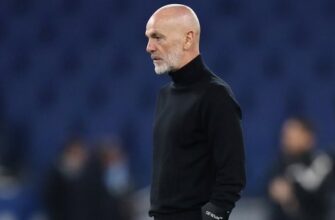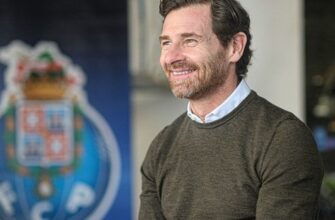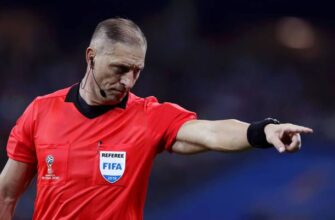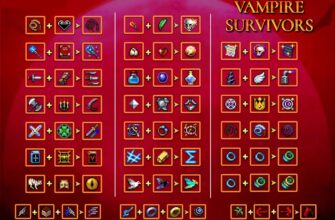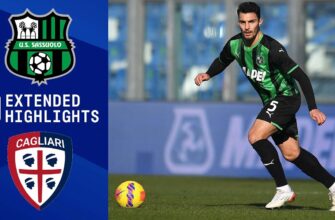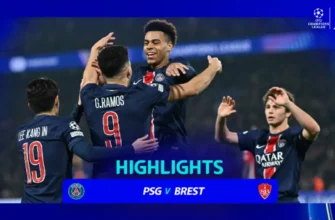As the calendar turns towards August 23rd, the Italian football landscape is poised for a season unlike any other. The Serie A 2025-26 campaign is set to kick off amidst an unprecedented wave of change, with the dugout proving to be a hotter seat than ever before. A staggering seven of last season`s top ten teams have ushered in new leadership, transforming the league into a tactical laboratory where familiar faces return and bold new experiments take shape. This isn`t just a season; it`s a grand reshuffle, a testament to the beautiful game`s relentless evolution.
The Champions` Gambit: Napoli`s Quest for Dynasty Amidst Stability
Last season, Napoli clinched the Scudetto in a thrilling finale against Inter. Yet, in a league gripped by managerial wanderlust, the most surprising narrative is perhaps Napoli`s unwavering **stability**. While rivals scrambled for new strategists, Antonio Conte, the architect of their triumph, opted to remain at the helm. This continuity, paired with a remarkably bolstered squad, places the Neapolitan club in an enviable position.
The arrivals of midfield maestro Kevin de Bruyne on a free transfer, alongside talents like Noa Lang, Sam Beukema, Lorenzo Lucca, and Vanja Milinkovic-Savic, have transformed an already formidable unit into an apparent juggernaut. It seems Napoli has not merely reinforced; they`ve upgraded significantly, creating a truly intimidating force. While other contenders grapple with new philosophies and bedding-in periods, Napoli can simply press `play` on their winning formula. How ironic that in a season defined by upheaval, the champions` greatest strength might just be their serene steadfastness.
Giants in Flux: Rebuilding Empires and Rekindling Flames
The narrative shifts dramatically when we look at the traditional powerhouses. Inter, reeling from a crushing 5-0 defeat in the Champions League final, made the decisive move to part ways with Simone Inzaghi. In his stead, Cristian Chivu, a 2010 Champions League winner as a player, takes the reins. Chivu`s Serie A coaching experience is notably sparse – just 13 games with Parma to his name, albeit successfully fending off relegation. This is less a managerial appointment and more an intriguing roll of the dice for a club of Inter`s stature. The squad retains immense talent, but can an untested hand guide them back to glory in the immediate term? Only time, and the unforgiving Italian spotlight, will tell.
Across the city, AC Milan welcomes a familiar face: Massimiliano Allegri. His return, following a Scudetto triumph with the Rossoneri in 2010-11, offers a comforting sense of nostalgia in an era of relentless change. However, this reunion comes with a significant caveat: key figures like Tijjani Reijnders and Theo Hernandez have departed. Milan is in a genuine rebuilding phase, a stark contrast to Napoli`s seemingly finished masterpiece. Yet, the absence of European football could be a double-edged sword, allowing Allegri to focus solely on domestic success and, crucially, a return to Champions League qualification. It’s a classic case of hoping past magic can overcome present challenges.
Meanwhile, Juventus, after a transitional period, have confirmed Igor Tudor as head coach. With former sporting director Cristiano Giuntoli also having moved on, the Bianconeri embark on another cycle. While roster adjustments are still anticipated, Juventus finds itself in a relatively strong position compared to some of their more chaotic competitors, aiming firmly for a Champions League berth.
The European Crucible: Ambitious Projects and Risky Ventures
The battle for European qualification promises to be fierce, with several clubs making bold statements. Perhaps the most captivating managerial shift sees Gian Piero Gasperini, after nine years and a Europa League triumph at Atalanta, taking the helm at AS Roma. Roma, having salvaged their last season under Claudio Ranieri`s advisory eye, clearly yearns for a sustained period of success. Can Gasperini replicate his transformative magic in the Eternal City?
Then there`s the delightful enigma that is Como. Having reportedly poured over $100 million into their squad, and crucially, resisting Inter`s advances for manager Cesc Fabregas, Como is not merely hoping to survive in Serie A; they`re aiming to be the season`s **surprise package**. A $100 million “surprise” is quite the oxymoron, but Fabregas`s project is undoubtedly the one to watch. Will they be the next Atalanta, or a cautionary tale of ambition outstripping immediate reality?
Other European hopefuls include Fiorentina, welcoming back Stefano Pioli after his stint with Al-Nassr. With key player Moise Kean retained, the Viola are expected to build on last season`s sixth-place finish. Bologna, fresh off a Champions League qualification and Coppa Italia win under Vincenzo Italiano, now face the immense pressure of living up to elevated expectations. The signings of Ciro Immobile and Federico Bernardeschi indicate a clear intent to compete at the international level.
On the other hand, Atalanta faces the daunting task of life after Gasperini, appointing Ivan Juric, a coach who worked extensively under Gasperini. While the idea is to maintain continuity, Juric`s prior struggles at Roma and Southampton raise questions. Similarly, Lazio sees the return of Maurizio Sarri, a tactical mastermind, but financial constraints have severely hampered their transfer activity. A master chef, perhaps, but with a severely limited pantry.
The Mid-Table Mirage and the Relegation Roulette
The middle tier of Serie A is typically a zone of relative stability, a safe haven from the anxieties of relegation, yet a step removed from European aspirations. Teams like Torino, consistent in their non-qualification for Europe but equally consistent in avoiding the drop, look set for another quiet season under new manager Marco Baroni. Udinese and Genoa, both having initiated new cycles last year, appear to be in similar boats – too early for European dreams, but robust enough to steer clear of trouble.
The true drama, as always, will unfold at the bottom. The fight to avoid relegation in Serie A is a brutal test of nerve and tactical acumen. Parma has made perhaps the season`s most audacious gamble by appointing 29-year-old Carlos Cuesta, Mikel Arteta`s former assistant at Arsenal, making him the youngest manager in Serie A history. This is either a stroke of genius or a recipe for disaster. Cagliari has also opted for an internal promotion, elevating their U19 manager Fabio Pisacane.
Sassuolo returns to Serie A after just one season in the second division, and with their financial backing, they are considered one of the stronger newly promoted sides. Hellas Verona, bolstered by a new American ownership, looks to consolidate their position after years of financial struggles. Conversely, Cremonese, despite hiring relegation-avoidance specialist Davide Nicola, appears to be in dire need of significant squad improvements. Lecce, having changed coaches again and potentially facing key player departures, and Pisa, returning to Serie A after over 30 years but seemingly ill-equipped for the top flight, are firmly positioned as prime candidates for the drop.
The 2025-26 Serie A season promises to be a captivating spectacle. From Napoli`s bid for a sustained dynasty to the bold managerial experiments across the league, every match carries the weight of new expectations and shifting destinies. It`s a testament to Italian football`s enduring ability to surprise, entertain, and, occasionally, inflict a degree of delightful chaos. Buckle up; it’s going to be an unpredictable ride.

